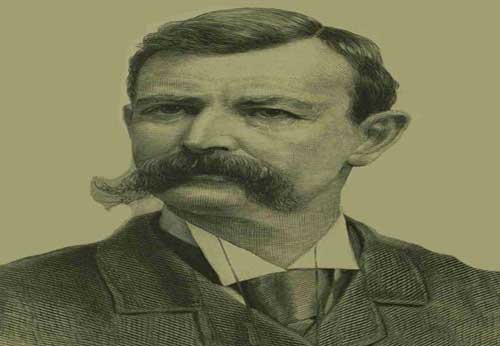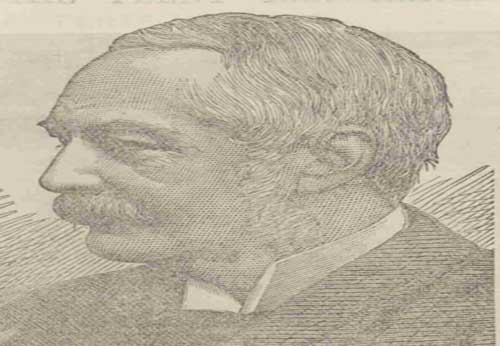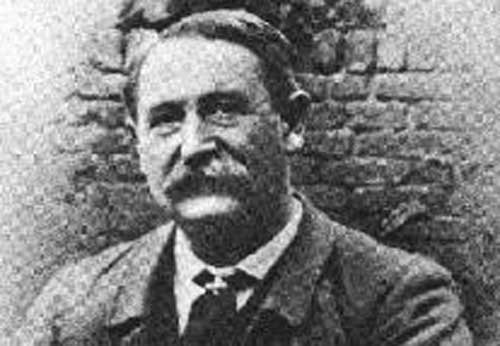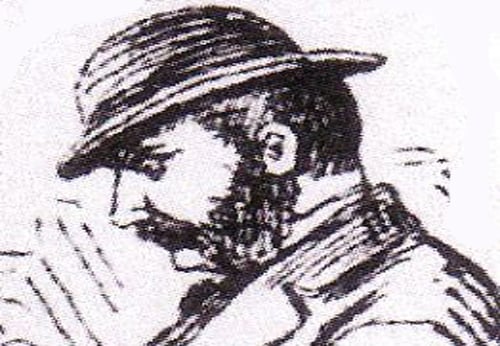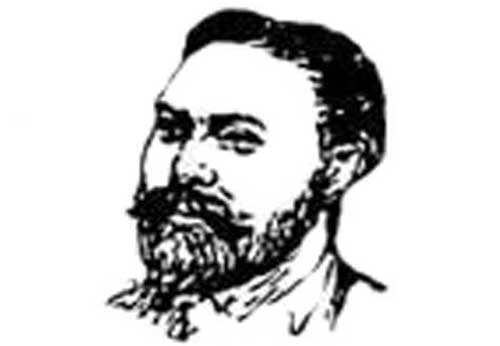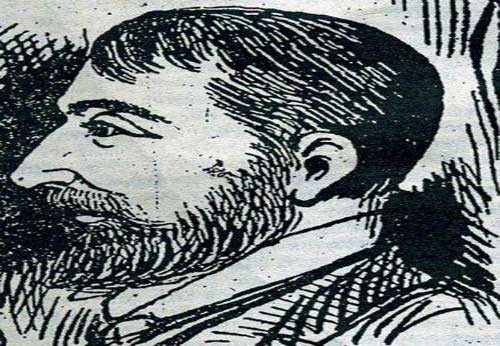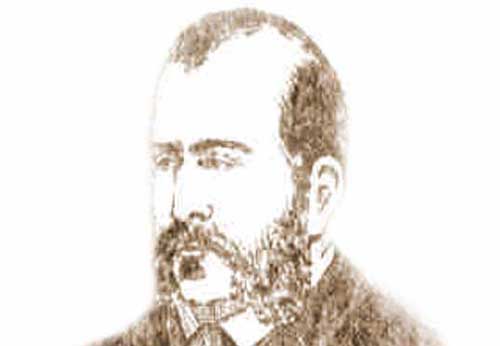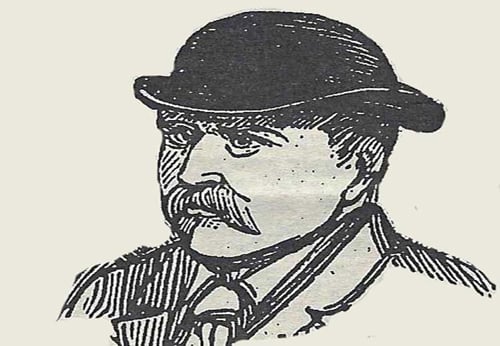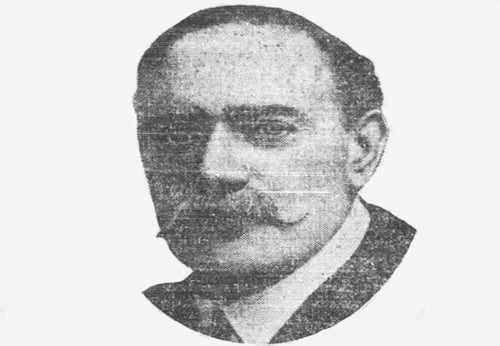- One of the reasons why the police failed to catch Jack the Ripper was that forensic science were in its infancy.
- Many investigative techniques that we take for granted today simply weren't available to the Victorian detectives.
- Even fingerprinting was not an established part of police investigative procedure.
- Site Author and Publisher Richard Jones
- Richard Jones
FINGERPRINTING AND CSI TECHNIQUES USED ON THE JACK THE RIPPER MURDERS
WERE THE VICTORIAN POLICE INCOMPETENT?
Ultimately the police attempts to bring the Jack the Ripper to justice would end in failure as nobody was ever charged with the crimes, albeit several of the officers who worked on the case would later claim that they had, indeed, caught the murderer.
The fact that the investigating officers never charged anyone with the crimes that are now known as the Jack the Ripper murders has often been used to depict the Victorian detectives as being next to useless.
However, the charge of incompetence that is often leveled against those long ago officers is largely undeserved.
There is a great tendency to simply dismiss the likes of Inspectors Abberline and Reid as bumbling Keystone Cops who stood no chance against the cunning ruthless killer they had been tasked with hunting down and bringing to justice.
MODERN DETECTION TECHNIQUES WERE NOT AVAILABLE
Indeed, although the investigation most certainly had its flaws, the police did as much as they could at the time, lacking, as they did, many of the modern aids to detection that we take for granted today.
FORENSIC SCIENCE NOT USED IN POLICE A INVESTIGATION
In the 19th century, although scientists specialising in a variety of fields regularly contributed to the deliberations of criminal courts - and had been doing so for close on a hundred years - in 1888 forensic science itself was not an integral or established part of a criminal investigation.
It would be another five years before the Austrian magistrate Hans Gustav Adolf Gross (1847 – 1915) published his ground breaking book Handbuch fur Untersuchungsrichter, Polizeibeamte, Gendarmen, u.s.w. (A Handbook For Examining Magistrates, Police Officials, Military Policemen, etc.) in 1893.
FIRST APPLIANCE OF SCIENCE IN AN INVESTIGATION
Gross was probably the first man to fully understand and appreciate the importance of scientific evidence in a criminal investigation, and his contribution to the field was acknowledged in 1895 when, at the International Union of Criminologists Congress, he was referred to as "...the father of Criminalistics..." – that is the study of crime, criminals, and the scientific methods of their identification, apprehension and prosecution.
Amongst the fields of knowledge that had not previously been considered an integral part of a criminal investigation that Gross advocated in this groundbreaking work was crime scene photography.
THE USE OF CRIME SCENE PHOTOGRAPHY
For us today, well versed in the science of Crime Scene Investigation, thanks to television programmes such as CSI and Law and Order, the use of photography is widely seen as an important part of a murder investigation.
Yet, at the time of the Jack the Ripper murders it hardly rated. Indeed, it was considered so unimportant that only one of Jack the Ripper’s victims, Mary Kelly, was actually photographed at the scene of the crime.
There were murmurs that photography might prove useful in helping apprehend the perpetrator of the crimes, but these tended to focus on more bizarre uses.
THE VICTIMS EYES PHOTOGRAPHED
Inspector Walter Dew reported that "...several photographs of the eyes were taken by expert photographers with the latest type cameras..."
He claimed that this was done in the ‘forlorn hope’ that the final image seen by Mary Kelly – i.e. the face of her murderer - had been preserved on her retina. Dew went on to comment that "the result was negative."
However, by 1888 both the Metropolitan Police and the City of London Police were employing the services of local freelance photographers to record the likenesses of those who had died suddenly as a means of identification.
PHOTOS OF THE RIPPER'S VICTIMS
As a result they have left us with the rather haunting mortuary images of four of Jack the Ripper’s victims, plus that of Martha Tabram as well as the aforementioned scene of crime photographs of Mary Kelly’s body in situ.
It is worth noting that, in the case of the murder of Catherine Eddowes, the City police were more advanced than their Metropolitan Police counterparts in recording the immediate vicinity around where the murder had taken place. They even went so far as to have a detailed sketch made of the area to be presented at the subsequent inquest into her death.
CRIME SCENES NOT PHOTOGRAPHED
But, as far of the sites of the other Jack the Ripper victims who were murdered outside – Mary Nichols, Annie Chapman and Elizabeth Stride – were concerned, little was done to make a photographic record of the bodies in situ and the main thrust of the initial police investigations in the immediate aftermath of the bodies being found was to get those bodies away from the scene of the crime as quickly as possible for fear that the longer they remained at the site the more danger there was that there would be public disorder.
FINGERPRINTING NOT USED
Another important means of identifying criminals – that of fingerprinting – was also not used in the Jack the Ripper police investigation. Indeed, the idea that a person’s fingerprints might be used to connect them with a crime was not an established piece of police procedure.
The usefulness of fingerprint impressions to a criminal investigation had only emerged in 1880 when Dr Henry Faulds (1843 – 1930), a Scottish physician working at the Tsukiji Hospital in Tokyo, published a letter in the British scientific journal Nature.
FINGERPRINTING SUGGESTED
In the letter he wrote of his interest in the finger impressions left behind on fragments of ancient pottery and wondered if fingerprints might not be a possible means of identification.
In response, Sir William Herschel (1833 – 1917) - who at the time was Chief Administrative Officer of the Hooghly district of Bengal, India - reported that he had been using thumb impressions to identify illiterate prisoners and workers in the course of his official duties.
FIRST SCIENTIFIC APPRAISAL OF FINGERPRINTING
The interest sparked by the Nature article led Sir Francis Galton (1822-1911) to undertake the first completely scientific appraisal of fingerprints in the course of which he corresponded with Herschel who won him over to the possibility of identification by fingerprints.
Galton’s research laid the ground work for Sir Edward Henry, who was appointed Inspector General of Police in Bengal in 1891, to devise a workable classification for fingerprints and, in 1896, he instructed the police forces under his command to adopt dactyloscopy (the term then used for fingerprinting) as the routine procedure for registering the identity of criminals.
AN IMMEDIATE SUCCESS
The success of the new method was immediate and, as a result, the rate of criminal identification in India improved dramatically.
In 1901 Henry was appointed Assistant Commissioner of the Metropolitan Police and began implementing his new fingerprint system.
BRITAIN'S FIRST CONVICTION FROM FINGERPRINTS
On September 13th 1902 Harry Jackson, a labourer, was jailed for seven years for having stolen some billiard balls from a house in Denmark Hill in London.
The police had discovered some fingerprints on some wet paint on a window ledge and, having called in the Metropolitan Police Fingerprint Bureau, were able to match the left thumb to Jackson who was duly prosecuted and, having been found guilty, achieved the distinction of being the first person in Britain to be convicted on fingerprint evidence.
NOT EVERYONE IMPRESSED
However, not everyone was impressed with this new breakthrough, as is evidence by a letter to The Times from "A Disgusted Magistrate" who opined that "...Scotland Yard, once known as the world's finest police organisation, will be the laughing stock of Europe it if insists on trying to trace criminals by odd ridges on their skins."
MURDERERS CONVICTED
Three years later, in 1905, the two Stratton Brothers, Alfred and Albert, were successfully prosecuted and hanged for the murders of paint shop owner Thomas Farrow and his wife Anne on the strength of a thumbprint found on the shop's metal cash box. As a result Henry’s system of fingerprinting became an accepted part of police procedure around the world.
NOT USED BY THE JACK THE RIPPER DETECTIVES
But all this was in the future for the detectives who were hunting Jack the Ripper in 1888.
Denied the advantages of forensic science and fingerprinting, they were forced to adopt a more (if you'll pardon the pun!) hands on approach to their investigation which combined local intelligence with sheer, hard investigative work.

